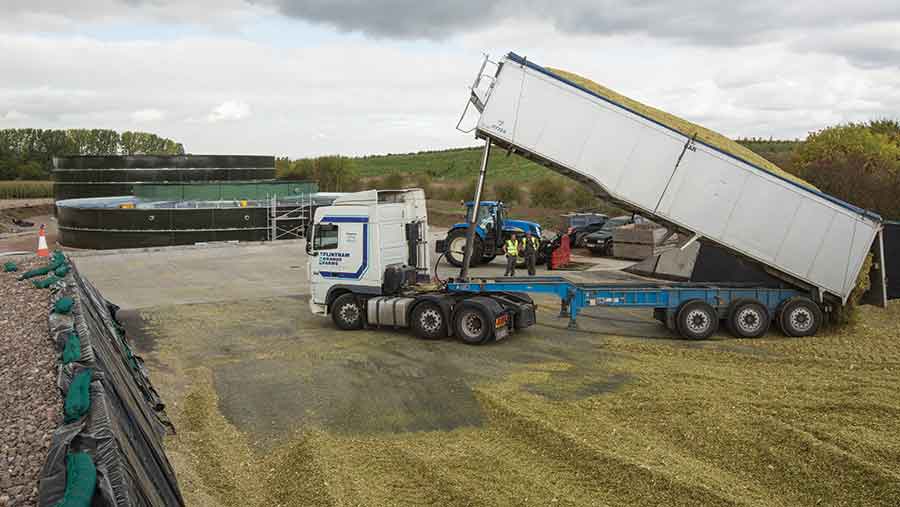Question marks hang over AD growth potential
 © Tim Scrivener
© Tim Scrivener A spate of newly commissioned biogas plants over recent months has pushed total electrical generation capacity past the 400MW threshold. However the figures mask a gloomy outlook for further investment in the sector.
Latest figures from the Anaerobic Digestion and Bioresources Association (ADBA) show 421 AD plants are operational in the UK (including the water sector). These have the capacity to produce 400MW of electricity.
A further 328 (equivalent to 314MWe capacity) have planning permission and 109 (116MWe) have submitted an application.
See also: AD feedstock must prove green credentials this autumn
Of those with planning either approved or submitted, ADBA says the vast majority (around 75%) are in agriculture where most plants have capacity of less than 500kWe.
Ofgem data on how many AD plants managed to pre-accredit for Feed-in Tariffs (Fits) before it was axed on 1 October is not yet available. History suggests that about 90% of those which do pre-accredit will be built over the next year, making it appear the industry is continuing to grow strongly.
However, ADBA fears this masks the real impact of Decc’s decisions to remove pre-accreditation and potentially slash the support budget for sub-500kW plants by 65%, which it says have crippled investor confidence and will not clearly filter through to deployment figures until 2017.
“The government’s policy decisions will grind the future development of on-farm AD to a halt,” chief executive Charlotte Morton says.
“This will cut off a key technology for diversifying and decarbonising British farming and could prevent renewables overall delivering their 10GW potential for on-farm energy. Given the number of dairy farmers has already halved to under 10,000 since 2002, we need to act now to unlock this resource and boost farming resilience.”
ADBA strongly objected to the proposed cuts to AD support in Decc’s recent FiT consultation, which closed at the end of last month, and calls on government to set much more ambitious targets for delivering new AD plants.
Cutting landfill pressure
The growth in AD technology and roll-out of household food waste collections has had a marked reduction on the amount being sent to landfill in Scotland, according to ADBA.
It says the amount of food thrown away has fallen by 8% a year since 2009, with the proportion of household waste sent to landfill falling below 50% for the first time.
One such waste-based plant is the 460kWe BioGask plant at Gask Farm, Aberdeenshire, which uses around 15,000t of farm pig slurry and meat processing waste, but also has potential to use chicken feathers, maize silage and fish processing waste to generate power for the National Grid.
